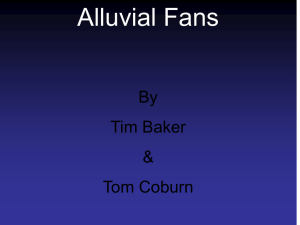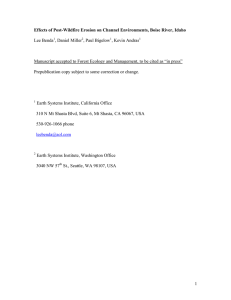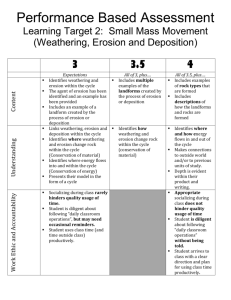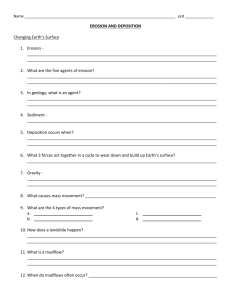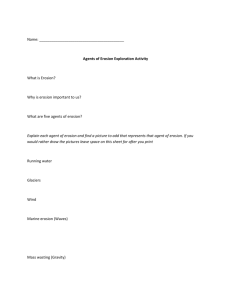Tic-Tac-Toe Pick Three in a Row
advertisement
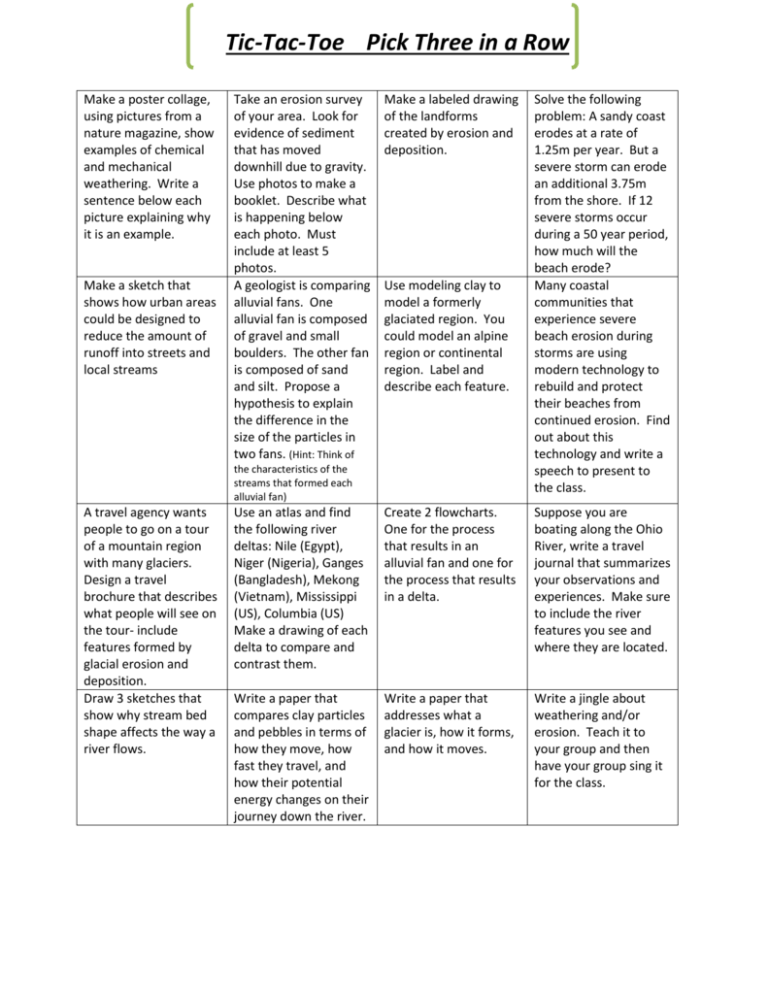
Tic-Tac-Toe Pick Three in a Row Make a poster collage, using pictures from a nature magazine, show examples of chemical and mechanical weathering. Write a sentence below each picture explaining why it is an example. Make a sketch that shows how urban areas could be designed to reduce the amount of runoff into streets and local streams Take an erosion survey of your area. Look for evidence of sediment that has moved downhill due to gravity. Use photos to make a booklet. Describe what is happening below each photo. Must include at least 5 photos. A geologist is comparing alluvial fans. One alluvial fan is composed of gravel and small boulders. The other fan is composed of sand and silt. Propose a hypothesis to explain the difference in the size of the particles in two fans. (Hint: Think of Make a labeled drawing of the landforms created by erosion and deposition. Use modeling clay to model a formerly glaciated region. You could model an alpine region or continental region. Label and describe each feature. the characteristics of the streams that formed each alluvial fan) A travel agency wants people to go on a tour of a mountain region with many glaciers. Design a travel brochure that describes what people will see on the tour- include features formed by glacial erosion and deposition. Draw 3 sketches that show why stream bed shape affects the way a river flows. Solve the following problem: A sandy coast erodes at a rate of 1.25m per year. But a severe storm can erode an additional 3.75m from the shore. If 12 severe storms occur during a 50 year period, how much will the beach erode? Many coastal communities that experience severe beach erosion during storms are using modern technology to rebuild and protect their beaches from continued erosion. Find out about this technology and write a speech to present to the class. Use an atlas and find the following river deltas: Nile (Egypt), Niger (Nigeria), Ganges (Bangladesh), Mekong (Vietnam), Mississippi (US), Columbia (US) Make a drawing of each delta to compare and contrast them. Create 2 flowcharts. One for the process that results in an alluvial fan and one for the process that results in a delta. Suppose you are boating along the Ohio River, write a travel journal that summarizes your observations and experiences. Make sure to include the river features you see and where they are located. Write a paper that compares clay particles and pebbles in terms of how they move, how fast they travel, and how their potential energy changes on their journey down the river. Write a paper that addresses what a glacier is, how it forms, and how it moves. Write a jingle about weathering and/or erosion. Teach it to your group and then have your group sing it for the class.


